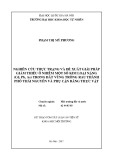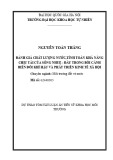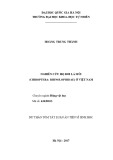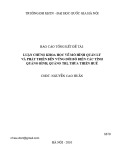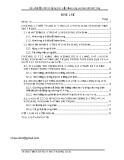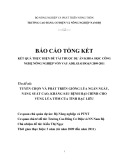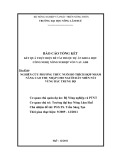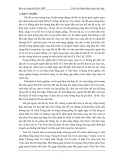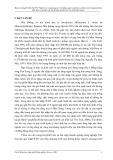
BioMed Central
Page 1 of 4
(page number not for citation purposes)
Journal of Negative Results in
BioMedicine
Open Access
Brief report
Lack of association between sCTLA-4 levels in human plasma and
common CTLA-4 polymorphisms
Andrew Berry, Matt Tector and Martin K Oaks*
Address: Transplant Research Laboratory, Aurora St. Luke's Medical Center, 2900 W. Oklahoma Ave., Milwaukee, WI, 53215, USA
Email: Andrew Berry - aberry@wisc.edu; Matt Tector - matt.tector@aurora.org; Martin K Oaks* - martin.oaks@aurora.org
* Corresponding author
Abstract
Background: Cytotoxic T lymphocyte antigen-4 (CTLA-4) is an important downregulatory
molecule expressed on both T and B lymphocytes. Numerous population genetics studies have
documented significant associations between autoimmune diseases and single nucleotide
polymorphisms (SNPs) within and around the CTLA-4 region of chromosome 2 in man.
Furthermore, circulating levels of a soluble form of CTLA-4 (sCTLA-4) have been reported in a
variety of autoimmune mediated diseases. Despite these findings, the relationship between levels
of sCTLA-4 protein, mRNA transcript levels, and SNPs within the CTLA-4 region have not been
clearly defined. In order to further clarify this relationship, we have tested four different SNPs
within the CTLA-4 region among subjects whom are negative (n = 53) versus positive (n = 28) for
sCTLA-4.
Results: Our data do not support a clear association between sCTLA-4 levels and any of the four
SNPs tested.
Conclusion: The variation in the SNPs tested does not appear to effect sCTLA-4 protein levels,
despite reports that they affect sCTLA-4 mRNA.
Background
Human chromosome region 2q33 contains three genes
known to be involved in immune regulation [1]. Two of
these genes appear to positively regulate immune
responses. These are the CD28 receptor gene and the
inducible co-stimulator (ICOS) gene. A third gene appears
to be a negative regulator of T cell activation; namely,
CTLA-4 [2,3]. It is thus not surprising that genetic varia-
tion within this region is implicated in engendering sus-
ceptibility to autoimmune disease. The CTLA-4 gene
yields at least two major mRNA transcripts in man [4].
One encodes a transmembrane protein that plays an
important role in downregulating T lymphocyte activa-
tion. The other transcript encodes what appears to be a
soluble form of CTLA-4 that lacks a transmembrane
domain, so the protein product should be found in the
extracellular space including blood plasma [5]. We, [6]
and others [7] have identified immunoreactive material in
human plasma that appears to represent the sCTLA-4 pro-
tein. Extensive population genetics studies have suggested
associations between SNPs in and around the CTLA-4
locus on chromosome 2 in man and the presence of
autoimmune disease [8]. The first of these reports was
made by Yanagawa et al [9] in 1995, who found a signifi-
cant association between variation in the (AT) dinucle-
otide repeat within the 3'-untranslated region of the
CTLA-4 gene and the presence of Grave's disease. Subse-
quent to these findings, many others have reported asso-
Published: 12 November 2008
Journal of Negative Results in BioMedicine 2008, 7:8 doi:10.1186/1477-5751-7-8
Received: 2 October 2008
Accepted: 12 November 2008
This article is available from: http://www.jnrbm.com/content/7/1/8
© 2008 Berry et al; licensee BioMed Central Ltd.
This is an Open Access article distributed under the terms of the Creative Commons Attribution License (http://creativecommons.org/licenses/by/2.0),
which permits unrestricted use, distribution, and reproduction in any medium, provided the original work is properly cited.




